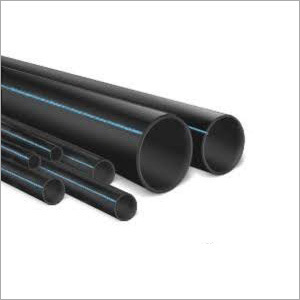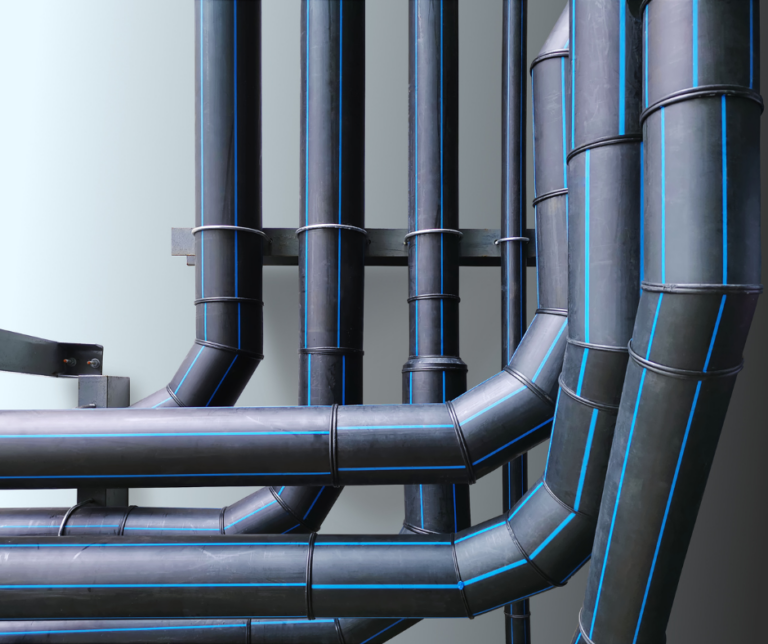Why hdpe pipe in stock Midland TX Is Essential for Local Industries
Explore the Manufacturing Refine Behind High-Quality HDPE Pipeline and Its Applications
The production process of high-quality HDPE pipelines is complex and systematic. It begins with the choice of basic materials that improve performance. Following this, ethylene undertakes polymerization to form resin, which is then formed with extrusion. Quality control is paramount, ensuring that the final product meets strict criteria. The journey of HDPE pipelines does not finish with production. Their applications across different industries disclose a broader importance worth checking out.
Understanding HDPE: Characteristics and Advantages

High-density polyethylene (HDPE) is a versatile polycarbonate recognized for its sturdiness and resistance to different environmental aspects. This material shows outstanding tensile stamina, making it ideal for demanding applications. Its low-density framework adds to a lightweight item, assisting in convenience of managing and installation. HDPE also showcases exceptional resistance to chemicals, which minimizes degradation when subjected to harsh substances.
The material's low dampness absorption even more improves its long life, making it ideal for use in pipelines and tank. In addition, HDPE is immune to ultraviolet (UV) radiation, making sure that items keep their honesty also when exposed to sunlight. Its adaptability enables for the development of elaborate shapes without compromising toughness. The environment-friendly nature of HDPE, frequently derived from recycled materials, contributes to its charm, promoting sustainable techniques in production. In general, these buildings and benefits make HDPE a recommended option for different commercial and customer applications.
Raw Material Option for HDPE Production
The choice of basic materials for HDPE production is essential to validate the final product fulfills the preferred requirements and quality standards. High-density polyethylene (HDPE) is mainly generated from polymerized ethylene, stemmed from fossil fuels such as gas or unrefined oil. The quality of these feedstocks significantly affects the mechanical and thermal homes of the final HDPE.
Additives also play a substantial role in improving HDPE's performance, consisting of antioxidants, UV stabilizers, and colorants, which enhance toughness and resistance to environmental variables. The option process need to consider not just the chemical structure of the raw products but likewise their handling attributes to assure effective production.
Moreover, the sourcing of basic materials must focus on sustainability and compliance with ecological regulations, as accountable methods are vital in today's market. Inevitably, cautious resources option lays the foundation for producing top quality HDPE pipes suitable for diverse applications.
The Extrusion Refine: Forming HDPE Pipeline
The extrusion procedure plays a vital duty in forming HDPE pipelines, beginning with thorough material preparation methods that ensure excellent circulation and uniformity. Equally crucial is the design of the die, which straight affects the final measurements and surface high quality of the pipe. Together, these factors add significantly to the effectiveness and top quality of HDPE pipeline manufacturing.
Product Prep Work Methods
Reliable manufacturing of HDPE pipelines starts with thorough product preparation techniques, particularly the extrusion procedure. During this phase, high-density polyethylene resin is initial dried out to get rid of moisture, making sure excellent circulation features. The material is then fed right into the extruder, where it undertakes heating and melting, transforming right into a thick state. This home heating process is carefully managed to maintain the product's stability and performance. The liquified HDPE is forced through a die, forming it right into a continuous pipeline form. Appropriate temperature management throughout extrusion is crucial, as it directly impacts the product's buildings and the end product quality. When shaped, the HDPE pipe is cooled down and cut to defined lengths, all set for subsequent handling and applications.
Die Layout Relevance
Precision in die layout plays a necessary duty in the extrusion procedure of HDPE pipes. The die acts as the last shaping tool, straight influencing the pipeline's dimensions, wall thickness, and surface area finish. A properly designed die guarantees consistent product circulation, decreasing issues such as irregularities and weak places. The geometry of the die should be optimized to fit the particular residential properties of HDPE, including its viscosity and thermal habits during extrusion. In addition, the cooling price of the material as it passes with the die can substantially affect the pipeline's structural stability. Spending in advanced die innovation is important for producers intending to generate high-grade HDPE pipes that meet market requirements and client assumptions.
Quality Assurance Steps in HDPE Production
Different factors influence the top quality of HDPE pipe manufacturing, efficient quality control measures are vital to assure uniformity and reliability in the last item (American Plastics HDPE Pipe Manufacturing). Trick quality control practices include rigorous material inspection, validating that the raw polyethylene fulfills well-known criteria for purity and thickness. Throughout the extrusion process, specifications such as temperature, stress, and cooling time are carefully kept an eye on to maintain dimensional accuracy and architectural stability
On top of that, post-production screening is necessary; makers commonly conduct hydrostatic examinations to evaluate the pipeline's stamina and resistance to pressure. Visual evaluations for surface area problems better enhance quality control. Accreditation from pertinent requirements organizations, like ASTM or ISO, offers an additional layer of reputation. By executing these detailed quality assurance actions, suppliers can decrease flaws, improve efficiency, and ensure that the HDPE pipelines meet the details demands of various applications, ultimately bring about consumer satisfaction and count on the item.
Applications of HDPE Pipe Across Industries
HDPE pipelines are used across various sectors because of their durability and adaptability. In water circulation systems, they ensure efficient shipment, while in wastewater monitoring, they provide trusted services for waste transport. Furthermore, farming irrigation networks profit from HDPE's resistance to corrosion and flexibility, making it a suitable selection for contemporary farming techniques.

Water Circulation Solutions
A considerable variety of industries count on high-density polyethylene (HDPE) pipes for reliable water distribution systems. Understood for their durability and resistance to rust, HDPE pipelines are widely made use of in municipal water system networks, agricultural watering, and commercial applications. Their lightweight nature promotes easy handling and setup, reducing labor expenses and time. Furthermore, HDPE pipelines can fit different stress degrees, making them suitable for both reduced and high-pressure systems. Pipe Manufacturing Midland TX. The versatility of the material permits seamless integration right into existing infrastructure, lessening the demand for comprehensive excavation. Additionally, HDPE's resistance to chemical seeping guarantees that the water delivered stays secure and clean, making it a suitable choice for keeping the quality of drinkable water throughout numerous markets
Wastewater Management Solutions
Reliable water distribution systems likewise lead the way for cutting-edge wastewater management remedies, where high-density polyethylene (HDPE) pipelines play a considerable duty. Prominent for their longevity and resistance to corrosion, HDPE pipelines are perfect for transferring wastewater in different setups. Their adaptability enables for simple installation in complicated settings, reducing the demand for comprehensive excavation. Additionally, HDPE's smooth interior surface area reduces friction, improving circulation rates and effectiveness. These pipelines are also immune to chemical leaching, making sure that impurities do not endanger the surrounding environment. Industries, districts, and therapy centers significantly rely upon HDPE pipes for their reliability and durability, making them a recommended selection for modern wastewater monitoring systems. This flexibility underscores the important importance of HDPE pipes throughout many applications.
Agricultural Watering Networks
Agricultural watering networks profit considerably from the use of high-density polyethylene (HDPE) pipelines, which supply efficient and reliable water distribution to plants. HDPE pipes are light-weight, making them easy to move and set up, while their versatility permits various configurations in diverse terrains. These pipes show exceptional resistance to deterioration, chemicals, and UV radiation, making certain durability in rough farming environments. Additionally, their smooth interior surface minimizes rubbing loss, maximizing water circulation and minimizing power expenses connected with pumping. The durability of HDPE pipes, commonly surpassing 50 years, adds to decrease maintenance and substitute costs. As a result, farmers increasingly rely on HDPE pipelines to enhance watering efficiency and advertise lasting agricultural methods, eventually causing improved plant returns and source conservation.
Future Fads in HDPE Pipeline Modern Technology
As the need for lasting and effective facilities expands, innovations in HDPE pipe innovation are positioned to change various sectors. Emerging patterns consist of the integration of wise innovations, such as sensors and IoT abilities, pool pvc fittings which facilitate real-time surveillance of pipeline conditions, decreasing maintenance costs and protecting against leakages. In addition, the advancement of advanced production techniques, such as 3D printing, is enabling the manufacturing of facility, personalized pipe layouts that accommodate certain project needs.
The emphasis on recycling and round economic situation practices is driving the technology of HDPE pipes made from recycled products, improving sustainability. Enhanced jointing methods, such as electro-fusion and mechanical installations, are likewise boosting setup performance and reliability. The growing emphasis on ecological policies is pressing producers to take on greener production processes, making certain that HDPE pipelines not only satisfy industry requirements but also cultivate a more sustainable future for facilities advancement.
Often Asked Inquiries
Just How Does HDPE Compare to Various Other Plastic Products?
HDPE outperforms many various other plastic materials pertaining to toughness, chemical resistance, and versatility. Its reduced density and high tensile stamina make it excellent for different applications, often going beyond alternatives in both performance and durability.
What Are the Environmental Effects of HDPE Manufacturing?
The environmental effects of HDPE production include greenhouse gas discharges, energy consumption, and prospective air pollution from making procedures. In addition, inappropriate disposal can bring about dirt and water contamination, raising issues regarding lasting eco-friendly results.
Can HDPE Pipes Be Recycled?
Yes, HDPE pipelines can be reused. Several facilities accept used HDPE for handling, transforming it right into new products. This reusing adds to sustainability initiatives, reducing plastic waste while preserving sources and energy in the manufacturing cycle.
What Is the Lifespan of HDPE Piping?

How Do Temperature Level Variations Affect HDPE Pipe Efficiency?
Temperature variants significantly impact HDPE pipe performance, influencing adaptability and strength. High temperatures can lead to softening, while low temperatures may cause brittleness, ultimately influencing the pipe's sturdiness and suitability for different applications in diverse environments.